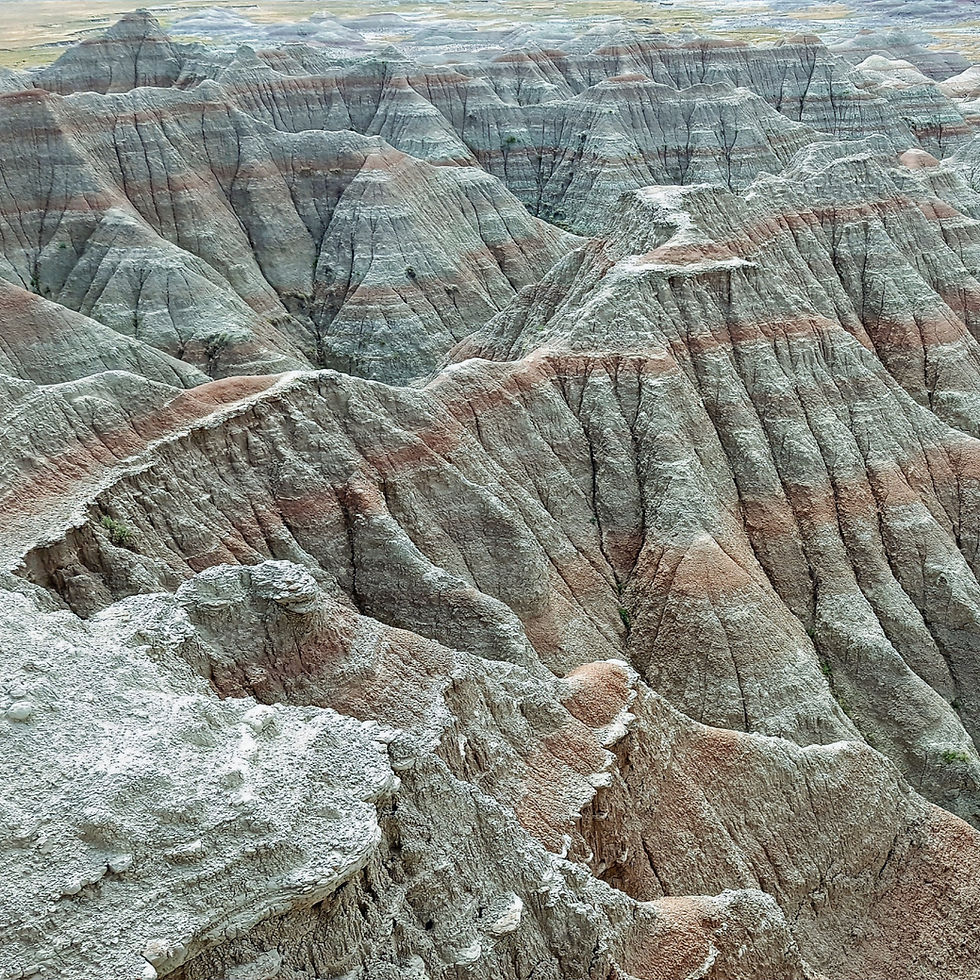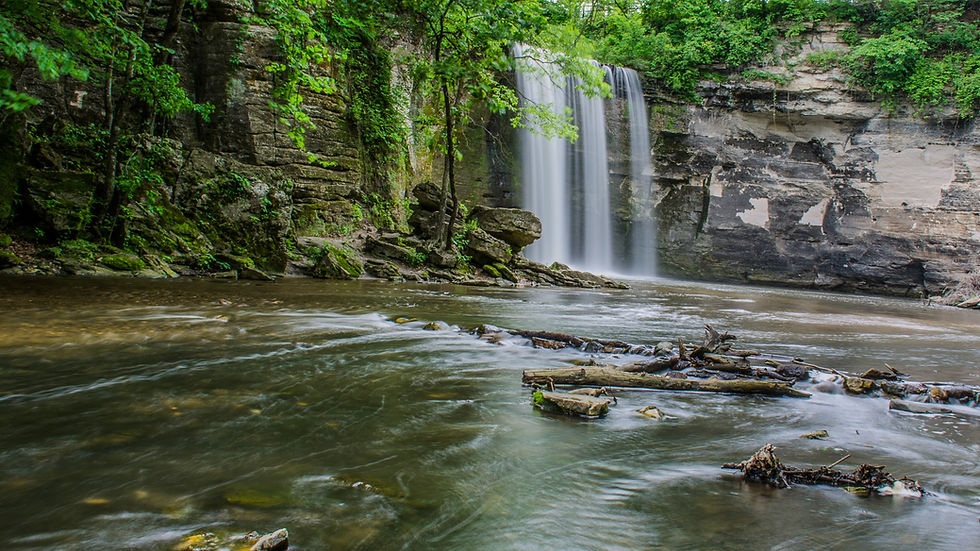Learning American History Along Maryland’s Harriet Tubman Underground Railroad Byway
- Greg Phillips
.JPG/v1/fill/w_320,h_320/file.jpg)
- Feb 17, 2024
- 5 min read
Updated: Apr 30
This byway is one of our choices for Maryland’s Top Scenic Byways, as listed in our Maryland section.

February is Black History Month, and this byway is an excellent route to follow if you want to learn about one of the most revered and courageous figures in American history. The best time of year to travel the byway is April through October when the colors and sounds of rural Maryland’s marshes, farms and small towns bustle with energy.
Cambridge southward to Blackwater National Wildlife Refuge then north to Delaware state line
Distance: 125 miles / 201 km
Maryland began as a colony in 1634 and for the next 230 years, slaves labored in every industry, providing the foundation for the state’s economy. The Underground Railroad was a network of routes and safe havens that helped enslaved people flee the fifteen slave states. Maryland native Harriet Tubman is synonymous with the Underground Railroad. In 1849, she escaped to Pennsylvania, traveling alone and generally at night. Over the next 10 years or so, she made some 13 secret trips to Maryland rescuing about 70 family and friends.
This All-American Road traces some of the routes that Tubman and others followed from Maryland into Delaware and onto Pennsylvania. Most of the 46 sites are in Maryland. Read our Delaware article for the locations in that state.
The byway begins in Cambridge, on Maryland’s Eastern Shore, about 60 miles southeast of Annapolis and 90 miles southeast of Baltimore. Here are our favorite stops but to see the complete list, visit the byway’s official website.
Cambridge is a small city on the Choptank near where the river flows into Chesapeake Bay. The Chesapeake Country Scenic Byway passes through here, too. Take a look at our article above. Cambridge’s historic downtown features several Underground Railroad byway sites and a logical starting point is the Harriet Tubman Museum and Educational Center. Tubman was born a few miles from Cambridge and the museum features displays about her life, slavery, the Underground Railroad and Civil War. There’s also an amazing mural.
A few blocks away, Long Wharf extends into the Choptank River and along this waterfront, kidnapped Africans were sold. In the 1700s, Cambridge was a regional center for the slave trade, where ships arrived from Africa and the West Indies. Later, thousands of slaves were shipped from this wharf to plantations in the Deep South.
From Long Wharf, it’s three miles to the Stanley Institute, a one room school that was moved to this location in 1867, after the Civil War ended. Used until the 1960s, the Rock School was built and run by African Americans and “stands as a testament to the black community’s determination to educate their children in a segregated school system.”
Ten minutes west is Malone’s Methodist Episcopal Church, founded in 1864 as the area’s first African American church. Harriet Tubman was born around 1822 on a nearby farm. It’s also believed she worked and lived in the area with her free husband, John. For years, footpaths through the woods connected nearby communities, creating a social network for free and enslaved blacks.
Heading three miles west on Maryland State Highway 16, look for Joseph Stewart’s Canal on the right as you cross Parsons Creek. The seven-mile canal was dug by enslaved and free blacks and used to float logs and agricultural products to nearby wharves. A secret network of communication also developed, which Harriet Tubman learned while working the forests and docks.
After escaping to Pennsylvania, Tubman used the network to message her three brothers through Jacob Jackson, a free black veterinarian. Once she learned her brothers were soon to be sold, Tubman got word to Jackson that she would rescue them. Jackson’s home site is part of the Harriet Tubman Underground Railroad National Historical Park, which you can reach by returning east toward Cambridge on MD 16. Go seven miles then turn right onto MD 335. It’s four miles to the park’s visitor center, featuring in-depth exhibits on the Underground Railroad and Tubman’s heroic life.
The park is adjacent to Blackwater National Wildlife Refuge which hasn’t changed much since Tubman’s time. Well, except for the ghost forests: trees killed by rising sea levels due to climate change. Several escapes happened here, although Tubman isn’t known to have been involved. Today, birdwatching, hiking, paddling and deer hunting are popular. It’s the same setting and tidal marsh conditions Tubman and others would have mastered while navigating, trapping and foraging for food and hiding from pursuers.
Another 5.5 miles east and you’ll see Harriet Tubman’s Childhood Home. It’s just a sign; the original house is gone. Go a mile more to Bucktown General Store, site of Tubman’s “First Act of Defiance.” While shopping, she was ordered to help restrain another slave. Tubman resisted, the man bolted and the overseer threw a two-pound weight which hit Tubman, nearly killing her and causing a severe lifelong injury.
Now, the byway heads north and in about 23 miles, you’ll reach the home of white Quaker abolitionists, Jacob and Hannah Leverton. It’s privately owned so you can only look, but the site is considered the region’s main stopping place for the Underground Railroad. Train terms were used, and so guides, like Tubman, were called conductors. The Levertons were agents and their residence, a station house. Throughout Maryland and Delaware, Quakers, people of other faiths and free blacks helped hide and lead freedom seekers as they pushed northward to Pennsylvania.
From the Leverton Home, it’s five minutes to the Linchester Flouring Mill Complex where free and enslaved blacks worked together. The water-powered mill stopped running in 1979 but you can tour by appointment. Go another five miles north to the James Webb Cabin. Built in the 1850s by a free African American farmer, it’s a rare survivor of housing typical for black and many poor white families.
Continuing 10 minutes north, the William Still Interpretive Center is an 1820s one room house with a “slave cabin” interior and a garden. The center tells the story of the Still family’s struggle for freedom through escape and resettlement. William Still became a prominent figure of the Underground Railroad. He was Chairman of the Philadelphia Vigilance Committee of the Pennsylvania Anti-Slavery Society, helping some 1,500 freedom seekers escape.
Denton is another 10 minutes north and as you drive through town, look for the Caroline County Courthouse. It was rebuilt after the Civil War, but the location was the site of a slave market and jail. Five minutes west across the Choptank River is the Tuckahoe Neck Meeting House, one of five Quaker meeting houses in the county whose members ran a local Underground Railroad network.
From Denton, continue north on MD 313 to Greensboro, Red Bridges Road and Goldsboro where the Harriet Tubman Underground Railroad Byway story continues in our Delaware section.





Comments